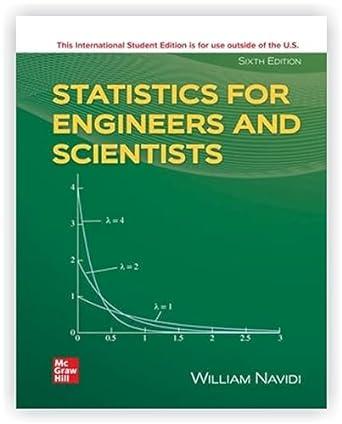Drop the dates in which the record high occurred more than once, and test the hypothesis in
Question:
Drop the dates in which the record high occurred more than once, and test the hypothesis in Exercise 22 again. Does your conclusion change?
Data From Exercise 22:
If a record high is equally likely to occur in any year of observation, the mean year in which a record is observed would occur at the midpoint of the observation period, which is \((1871+2020) / 2=1945.5\). Test the hypothesis that the mean year in which a record high occurred is 1945.5 against the alternative that it is greater. What do you conclude?
Fantastic news! We've Found the answer you've been seeking!
Step by Step Answer:
Related Book For 

Question Posted:





